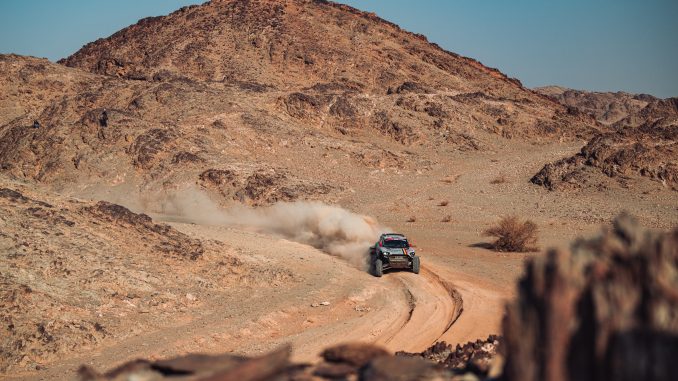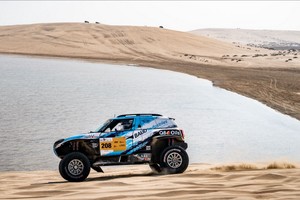
– 8,000 demanding kilometers across Saudi Arabia
– ASO releases further details on Dakar 2026
The excitement is rising – with just under 50 days left until the start of the legendary Dakar Rally 2026! The ASO has now published detailed insights into the route and schedule of the 48th edition. For the seventh consecutive time, Saudi Arabia will be the exclusive host of the desert rally. In 2026, participants can expect an approximately 8,000-kilometer loop starting and finishing in the port city of Yanbu. Of this distance, 4,900 kilometers will be timed stages featuring highly diverse terrain.
 Shortly after Christmas, the teams will travel to Yanbu, where scrutineering will take place on January 1st and 2nd, 2026. After a short prologue on January 3rd, the first full stage will kick off on January 4th. Following 13 stages and a rest day in the capital city of Riyadh, participants will celebrate the official finish on January 17th, 2026, back in Yanbu.
Shortly after Christmas, the teams will travel to Yanbu, where scrutineering will take place on January 1st and 2nd, 2026. After a short prologue on January 3rd, the first full stage will kick off on January 4th. Following 13 stages and a rest day in the capital city of Riyadh, participants will celebrate the official finish on January 17th, 2026, back in Yanbu.
For the first time since the move to the Arabian Peninsula, the Dakar will not enter the infamous ‘Empty Quarter’ – the largest continuous sand-dune area in the world. Instead, the route will lead through impressive and varied landscapes: rocky canyons, massive mountain ranges, dune fields, and fast off-road sections. For certain stages, the organizers expect such high (tire) wear that ‘pit stops’ will be permitted. At designated points, crews may stop at their teams for repairs.
On several stages, the different vehicle categories – motorcycles, cars, trucks, and side-by-sides – will tackle partially separate route options. This not only increases safety but also ensures terrain that is perfectly tailored to each category’s technical requirements.
 A marathon stage awaits participants in both weeks of the rally. Without assistance from their teams, they must spend the night alone and carry out inspections and repairs on their vehicles by themselves. However, the ASO has tightened the conditions even further. In the so-called ‘Refugee Bivouac’ – inspired by the 48-hour Chrono stage, which will not take place in 2026 – there will be no infrastructure at all. Drivers will have access only to a tent, sleeping bag, sleeping pad, and one food ration. They must also prepare and heat their meal on their own. Pure Dakar spirit!
A marathon stage awaits participants in both weeks of the rally. Without assistance from their teams, they must spend the night alone and carry out inspections and repairs on their vehicles by themselves. However, the ASO has tightened the conditions even further. In the so-called ‘Refugee Bivouac’ – inspired by the 48-hour Chrono stage, which will not take place in 2026 – there will be no infrastructure at all. Drivers will have access only to a tent, sleeping bag, sleeping pad, and one food ration. They must also prepare and heat their meal on their own. Pure Dakar spirit!
Until then, there is still plenty of work to do: At X-raid, the service and race vehicles are currently being prepared for the great adventure. They will be shipped from Barcelona to Saudi Arabia at the end of November.
You can find the Dakar 2026 presentation in the re-live here.
 Statement
Statement
Guillaume de Mévius (MINI JCW Rally 3.0i): « It looks like a pretty tough Dakar, and I think we’ll be covering a lot of mileage. When you look at the road sections and the special stages combined, there are some really long days ahead. That will definitely be challenging. I really like the idea of the new marathon stages. They look tough for sure, but also really exciting, and I’m genuinely looking forward to them. I think a big part of the Dakar will be decided there. There will be fewer dunes this year, which is fine for me. I like dunes, but they’re not always the easiest place. So a Dakar with a bit less dune terrain works well for me. Overall, it looks like a very long Dakar in terms of total distance, especially with those two marathon stages. Now I’m just looking forward to getting there and starting. »
